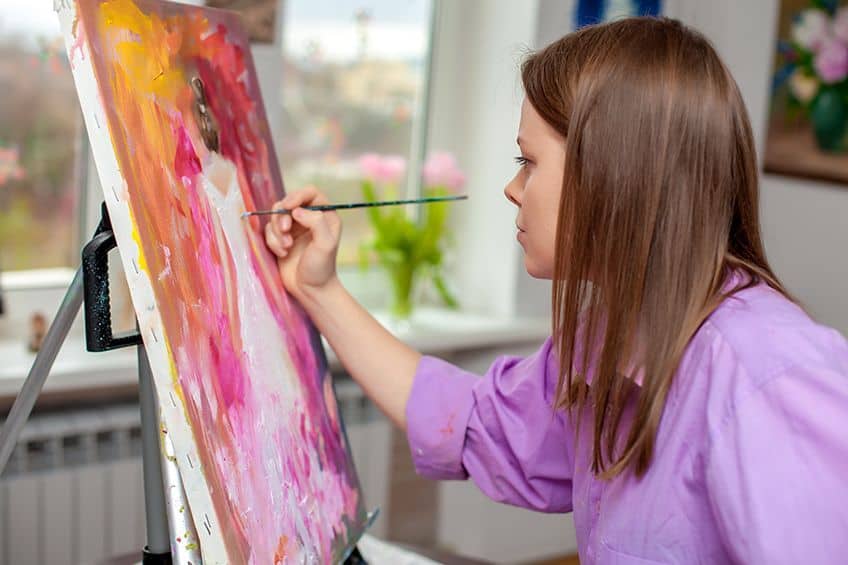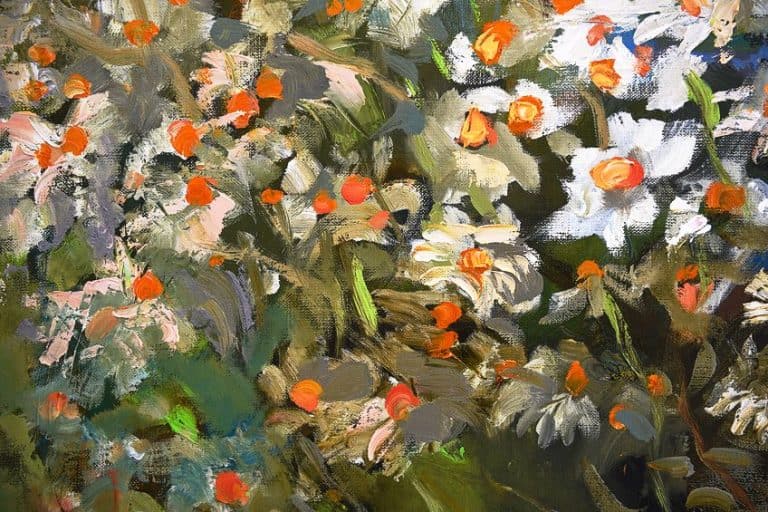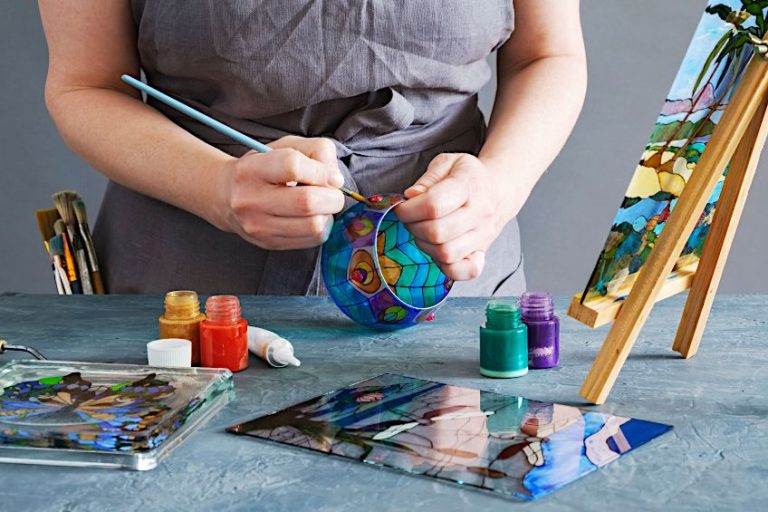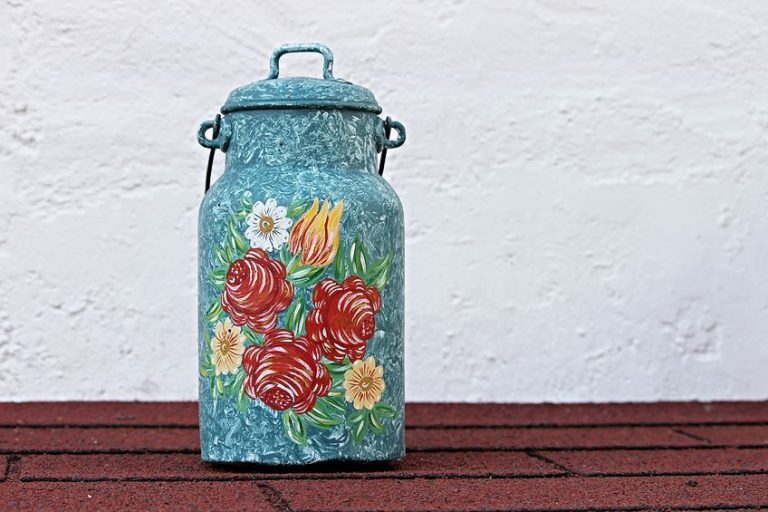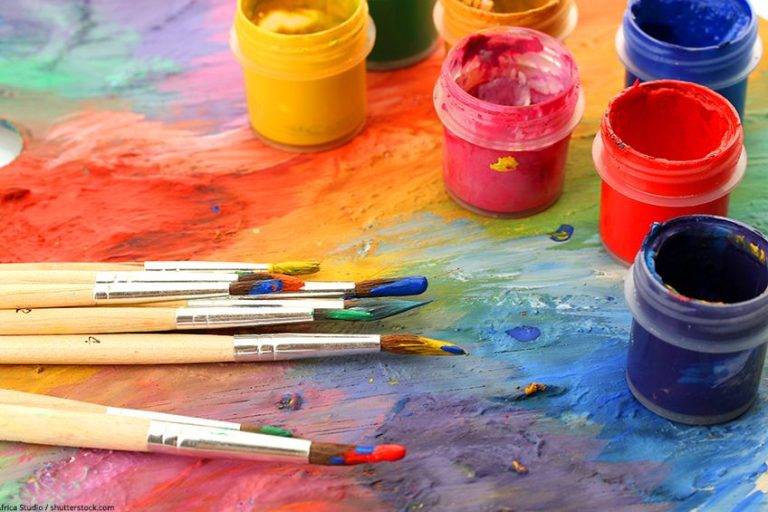Acrylic Painting Techniques – Unique Acrylic Painting Styles
Some might think that acrylic painting is just as established as oil painting, however, it has only existed within the last century. Maybe you are new to acrylics and want to find out all about the amazing and fun acrylic painting techniques there are. In this article, we hope to share some basic acrylic painting styles with you, so you can get started with your own acrylic paintings right away!
Why Should You Use Acrylic Paint?
Before we begin, let us have a look at why many artists choose acrylic paints. The main reason is that you can achieve the effects of both oil paints and watercolors. Acrylic paint is creamy and thick, provides vibrant colors, blends wonderfully, and is opaque like oil paint. However, like watercolors, acrylics are water-soluble, it is fast drying, and there is no fuss about cleaning up as it is water-based.

Acrylics are also versatile and can be applied to many surfaces. So, you can paint on canvas and paper, but you can also apply it to plastic, glass, wood, fabric, and plaster. Unlike oil paints, acrylics dry very fast and become water-resistant once dry. There are also many mediums you can add to acrylics, which can allow it to dry slower, change consistency, and provide different textures. There are numerous brands of acrylic paints you can choose from, and in general, acrylics are much more affordable than other paint options. You do get the expensive professional-grade and more affordable student-grade choices. Let us now look at some of the most awesome acrylic painting techniques.
Acrylic Painting Techniques
Before you begin painting with acrylics, you should make sure you have a few quality brushes. The best brushes are usually synthetic, so they can be used with different mediums without causing damage. Get yourself a basic brush kit that has a range of sizes and shapes, which can help with creating the various acrylic painting techniques much easier.
Let us now move on to the various acrylic painting techniques used.
Acrylic Dry Brushing Technique
For this textured painting technique, take a dry brush and dip it into some paint and then remove most of it on another surface. The paint that is then left over, you can apply to the canvas surface. The technique should create uneven lines and reveal parts of the base paint coat. This helps to add texture and dimension and is often applied to form landscapes. For example, to create clouds or blades of grass.
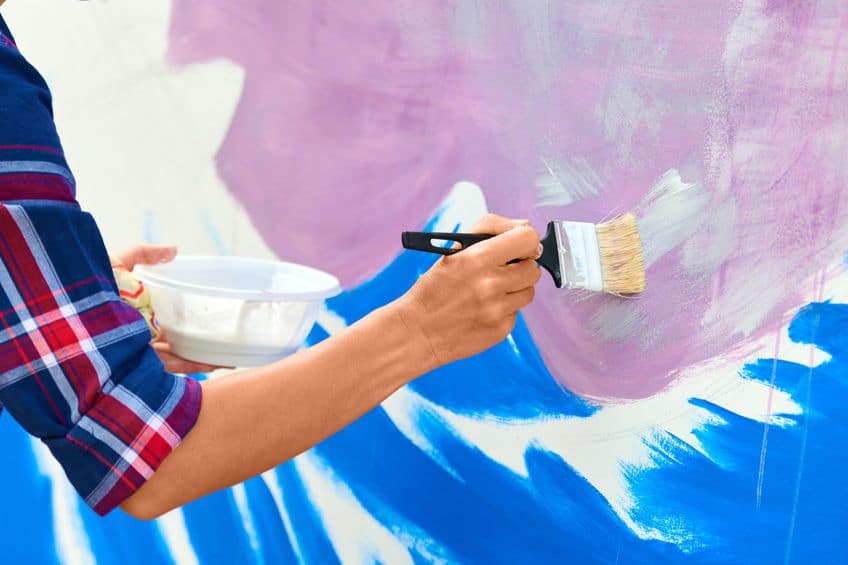
Dabbing Technique
Using a stiff bristle brush, lightly dab the paint onto the canvas surface. This will add accents of color, but you can also apply multiple layers for added depth. This technique is perfect for painting things like bushes.
Blending Technique
Blending can be a bit more challenging as the paint dries fast, but there are ways to work around this. You can add a slow-dry medium or use paint that is already made to dry slowly, known as open acrylics. Blending can be combining two colors to make a new one, or you can create a color gradient, where two colors are blended so the color transitions from one to the other.
To blend, the best option is to use the wet-on-wet technique. However, you can also use dry brushing to blend or try using glazes.
Blending is different from mixing because you can still see the two original colors somewhere in the painting. Blending helps to subtly add a more realistic or complete look to a painting. Consider painting sunsets or oceans with this technique. There are three wet-on-wet techniques you can use for blending.
- Horizontal: Paint a layer of color from left to right, then take another color and paint from left to right below the first color. Move up, using horizontal strokes, and blend the colors.
- Circular: This uses a circular motion to blend colors, working from the inside out. This is ideal if you wish to paint lighter colors on the inside and darker colors on the outside.
- Double load: This uses two colors loaded onto a brush, which you then blend on the surface to create a two-tone type of effect.
Detailing Technique
To add more detail to a painting, you can use a smaller, and finer brush. You can also try using a wet brush, as a dry brush tends to spread out more, while a dry brush stays together better. This is usually done when the painting is nearly completed.
Chiaroscuro Technique
Chiaroscuro is a painting technique that can be used for oil paintings, watercolors, acrylics, and even in woodcut prints. The purpose is to produce a high contrast with both dark and light that can affect the composition and provide both depth and drama.
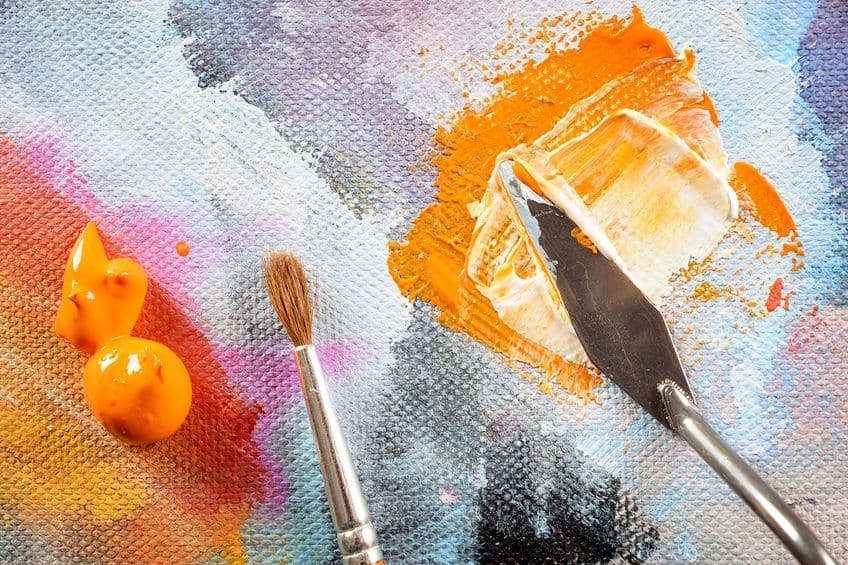
Faux Painting Technique
Faux means imitation or false, so this acrylic painting technique provides a similar imitating effect. You can paint an object to look like something else, so the finish appears to be like stone, marble, or wood. You can achieve faux finishes by using a variety of techniques, glazes, paint, rags, brushes, or sponges. This can be done on canvas, but it is used a lot on walls or other surfaces in the home.
Dry Brush Layering Technique
The technique is done exactly as it sounds. Apply a dark and thick layer of paint onto the canvas, so it has a slightly raised texture. Allow this to dry fully, and then use a bristle brush and lightly apply a white layer. Let this dry and then add another layer of different color paint. The two top layers will cover an area entirely, so some paint colors will be visible.
This is similar to scumbling, which has an even first layer of paint, which you can leave to dry. Then lightly apply another layer using a dry brush, moving in circles. This is a perfect technique for creating wispy clouds.
Fun Acrylic Technique
Most acrylic painting styles are fun, however, some are maybe a little more so than others. Techniques that require less skill can also be done by everybody, for example, you can also include acrylic pouring under this heading. These can also be considered as part of other abstract painting techniques. Here are three more fun ideas and techniques you might want to try. You can apply them separately on their own or within a composition.
- Water drops: Using a wet brush, dip into some diluted paint and apply to the canvas. Take some clean water in a pipette and add some drops to the still-wet paint.
- Acrylic dots: Acrylic dot painting is quite popular, and you can create many designs. Simply use the end of a pencil or a special tool and apply it to the surface, which is often a rock.
- Smudging: Place 3 to four colors alongside or close to each other, using a dry brush or directly from the tube. Then randomly blend these colors with a brush or palette knife.
Glazing Technique
The glazing technique has been around for many years to create some amazing paintings. The method uses a transparent layer of paint over an existing opaque layer. To apply this technique with acrylics, you will need your acrylic paint, a glazing medium, and your brush. Combine the glazing medium with the paint, which will create a transparent layer. This will add dimension and depth and bring out the form and colors underneath.
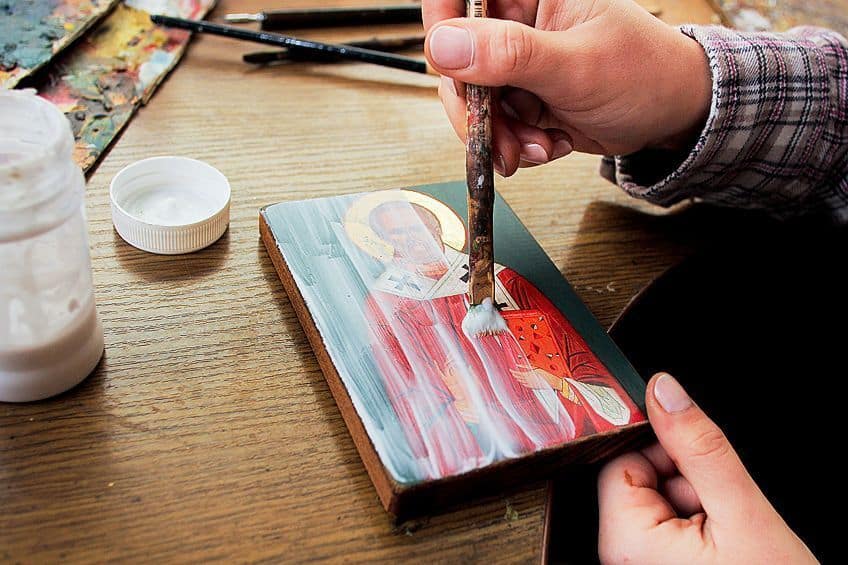
Mixing Acrylic Paint Technique
There are various ways to mix acrylic paint, the first squeezing paint onto a palette. Place two colors on the palette and mix thoroughly. You can use a circular motion to mix the colors evenly. The other is to mix directly on the canvas surface. Instead of mixing thoroughly, allow some streaks to show through for added effect and texture.
Splattering Technique
This is a fun technique that can be a bit on the messy side. You can use an old toothbrush, dip it in some paint, and then use your finger to pull back on the bristles, which will flick the paint onto the surface when they are released. You may need to thin the acrylic paint to get more splatter. The thickness of the paint will provide different splatter effects. This is another great textured painting technique you can use for things like painting gravel, or a popular one is adding stars to the night sky, or simply using it as one of the abstract painting techniques.
If you want to create larger splashes, which will make even more mess, you can use a paintbrush. Load the paintbrush with paint and simply flick this onto your surface, which should produce large splashes of color.
Rubbing Technique
This is more of an effect you can create using a cloth or other abrasive material. You can use this technique to remove minor mistakes, but it can also be used to create a “weathered” look. When rubbing a painting, you can reveal the color underneath, which is what gives the “rough” appearance. You can also try lifting or removing the paint, which can help when you make a mistake. This is also an ideal way to produce various effects or textured areas. It might take some practice, but try using a rag, sponge, or paper towel to lift the slightly wet paint off the surface.
Pouring Technique
This has become a popular and fun way to use acrylic paints, as it can be done by anybody. You will need to paint in an area that is prepared, as this can get messy. You can purchase acrylic pouring paint, which is made and ready to pour. There are various ideas to try out, but the most popular method is to add different colors to a single cup, not stirring them in. Take this cup and pour it over the canvas surface. Move and tilt the canvas so the paint reaches the entire surface, even dripping over the edges to leave behind interesting paint patterns.

Sgraffito Technique
This method is often used in sculpting or pottery but can also be done with acrylic paints. Spread some dark paint over the canvas and let it dry. Then apply another lighter shade of paint over the dark layer. Before it dries completely, take a toothpick or the back end of a paintbrush and draw shapes into the paint. This will allow the bottom layer of paint to show through your design.
Softening and Hardening Edges Technique
Sometimes, you would like to soften the paint edges, which can be done by using a wet brush with paint to create a line. Soften the line further by dipping in some more water and touching the edges, which should create a blurred or softened edge. To create a hard edge, use a dry brush with a fair amount of paint to create a line.
Once dry, this will be a hard and solid line or edge.
Sponging Technique
You can use a cellulose sponge to apply the acrylic paint. Dab the paint onto your surface, which will create a textured effect. This is perfect for beginners, as it is a simple and effective technique. You can also use a dry foam sponge to apply the paint. The amount of paint used, and the pressure used to apply the paint will provide different texture effects. You can wet the sponge first and then dip it into the paint, and stir. Lightly apply the paint to the surface.
Palette Knife Painting Technique
You can use a palette knife to create a beautiful impasto technique. It can be fun to experiment with other tools besides brushes when using acrylic paints. Pick up some paint with the palette knife and smear it onto the canvas surface. You can apply the paint at various angles. Try not to apply a lot of pressure when working the paint. This should create a thick and textured effect. The size and shape of the palette knife also allow for different effects.
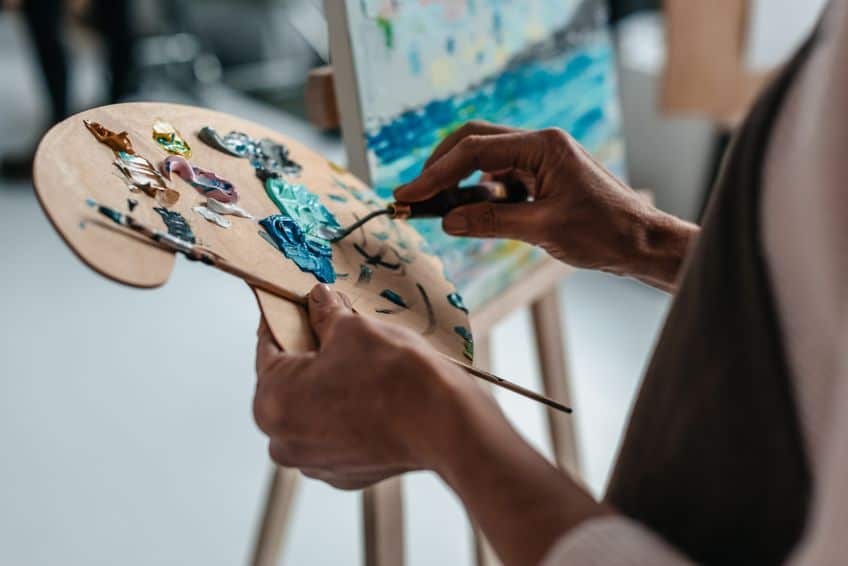
Stenciling Technique
Stenciling is quite an easy technique that can be done with acrylic paints. You can purchase stencils or create your own from plastic or paper. It is best to use painter’s tape to hold the stencil in place, so you can paint easily and without a mess. To paint, you can use a sponge or stencil brush, or try applying the paint with a palette knife. Apply the paint in dabs rather than strokes to get into all the spaces. Allow this to almost dry and then you can remove the stencil. You can leave it as a single color or apply different stencils and color layers.
Techniques Using Pens, Pastels, and Markers
There are ways you can combine the use of acrylic paint with other mediums like pens and markers. When using pens, pastels, and markers, first apply paint to the paper or canvas. You might have to dilute the paint when using pastels. Allow the paint to dry and draw over the paint with the pen or marker. Gel pens are a great idea, as they come in many colors. You can also try adding mica powder to the acrylic paint. Mix it in slowly on a palette, and then paint with it to create a metallic look. You can also include a little sparkle with the paint. To do this, first, apply the paint and let it dry.
Once dry, you can apply some glue in various shapes and then sprinkle some glitter over the top. Remove any excess glitter.
Stippling Technique
This technique involves the creation of many tiny dots, which can be in different colors and concentrations to provide a shading effect. The process is quite simple, dip a stiff brush into some paint and make sure it is evenly loaded. Hold the brush upright and begin to create dots on the surface by applying just the tip of the brush. This technique is often used in landscaping and creates gradations in colors as well as texture effects.
Wash Technique
Acrylics can be used as a thick consistency, but by adding water, the paint can also be thinned. Thinning the paint will reduce the amount of pigment and acrylic, and when applied to the canvas surface, it can resemble watercolors. You can use this technique to create beautiful acrylic background washes. Just remember, the paint still dries fast and permanently.
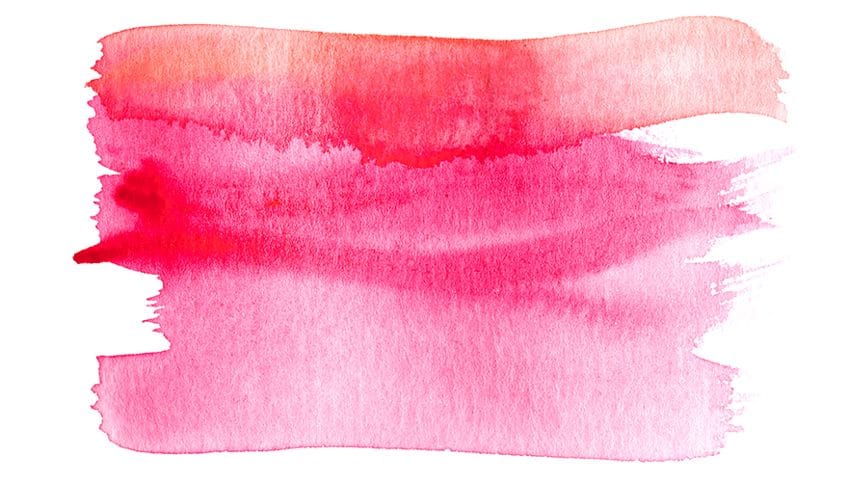
Wet-On-Dry Technique
You can use a wet brush, which is used to blend the paint on a palette. This is then applied to the dry canvas surface. By doing this, the paint will not spread too easily and will help with keeping clear lines, and can provide consistency throughout the painting.
Wet-On-Wet Technique
This technique involves wetting the surface and then thinning the paint with water before applying it to the wet surface. Acrylic paints do dry faster, which can make this a more challenging technique, however, there are additives you can add to the paint to slow down the drying time. You can also use open or interactive acrylics, which are great for this technique. This can also be wet-in-wet, where you apply paint to wet paint underneath, which is a textured painting technique.
This technique works closely with the blending technique we discussed above.
Acrylic Painting Tips
When it comes to any kind of art, it is a matter of practicing and experimenting with your work. The most basic techniques are always great to begin with, such as learning how to mix and blend colors, layering, or applying impasto and glazing techniques. Since you are dealing with colors, you should learn all about color theory and understand what a color wheel is. We hope you find these acrylic painting tips helpful.
- Keeping a cloth around at all times to wipe off excess paint or water can help.
- Choosing the right tools and materials can play a role in the outcome of your painting. So, choose the right brushes and good quality paints.
- Keep a range of brush shapes and sizes available to help with applying various textures and strokes.
- Try blending paints with a palette knife or extra brush for best results.
- You should also never leave the caps off the acrylic paint tubes or containers.
- Remember to thoroughly wash brushes when you are finished painting. Acrylic dries hard and the brushes can be ruined.
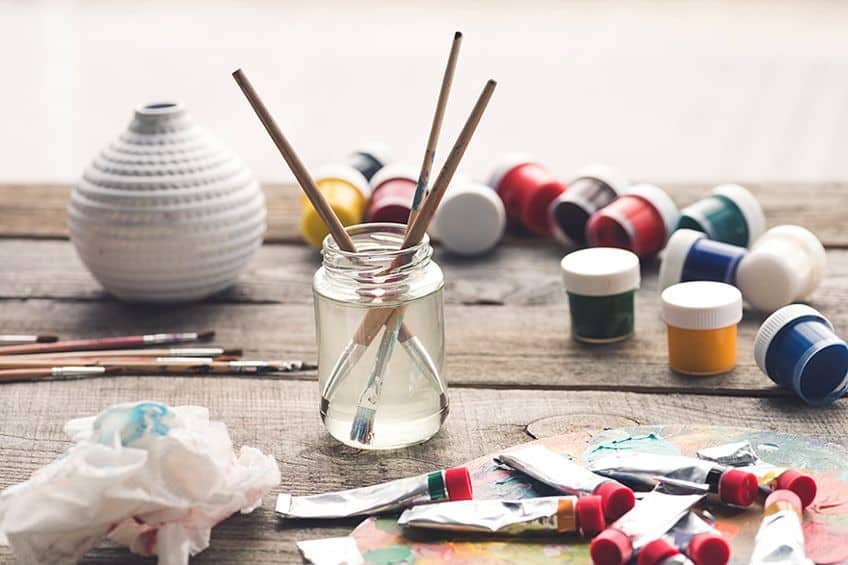
- Keep a misting bottle handy, which can help to moisten the paint and keep it wet for longer.
- Once you are done painting, it is a good idea to apply a varnish to protect your work from fading over time.
- Make use of painter’s tape to create straight and clean lines and shapes as you paint.
- Always mix paints thoroughly and take into account that some paints can dry a shade darker.
- Do not worry about making a mistake, because with acrylics, you can let it dry and simply paint over it.
- Do not forget to have fun and experiment with different media, such as pastels and marker pens.
By learning and experimenting with all of these awesome acrylic painting techniques, you can develop skills and create some amazing artwork. So, now that you have some idea of the various acrylic painting styles, what is your next artwork idea going to be?
Frequently Asked Questions
What Acrylic Painting Technique Is Used Most Frequently?
There are quite a few acrylic painting techniques that are popular, but layering has to be at the top of the list. What sets acrylic paint apart is that it dries fast, so you can paint another layer in a short amount of time.
What Is the Main Disadvantage of Acrylic Paints?
Some see the drying time of acrylics as an advantage; however, it does pose a problem and can be considered a disadvantage. You cannot blend acrylics easily or use the wet-on-wet technique as effectively as with oil paints. However, some additives can help with slowing down the drying time.
Can You Add Water to Acrylic Paints?
Acrylic paint is water-based, which means you can add water to achieve certain effects. When adding only a little water, this helps to thin the paint slightly for various purposes. However, if you add more than 50 percent water to the paint, it will create a watery thin consistency that is good for applying an acrylic painting technique known as a wash.
What Is an Easy Acrylic Painting Technique?
An easy way to begin painting with acrylics is to try abstract painting techniques. This is a fun way to paint, as it allows you freedom of expression without having to worry about creating the perfect image. You can truly let your imagination run free.
In 2005, Charlene completed her Wellness Diplomas in Therapeutic Aromatherapy and Reflexology from the International School of Reflexology and Meridian Therapy. She worked for a company offering corporate wellness programs for a couple of years, before opening up her own therapy practice. It was in 2015 that a friend, who was a digital marketer, asked her to join her company as a content creator, and this is where she found her excitement for writing.
Since joining the content writing world, she has gained a lot of experience over the years writing on a diverse selection of topics, from beauty, health, wellness, travel, and more. Due to various circumstances, she had to close her therapy practice and is now a full-time freelance writer. Being a creative person, she could not pass up the opportunity to contribute to the Art in Context team, where is was in her element, writing about a variety of art and craft topics. Contributing articles for over three years now, her knowledge in this area has grown, and she has gotten to explore her creativity and improve her research and writing skills.
Charlene Lewis has been working for artincontext.org since the relaunch in 2020. She is an experienced writer and mainly focuses on the topics of color theory, painting and drawing.
Learn more about Charlene Lewis and the Art in Context Team.
Cite this Article
Charlene, Lewis, “Acrylic Painting Techniques – Unique Acrylic Painting Styles.” Art in Context. May 3, 2023. URL: https://artincontext.org/acrylic-painting-techniques/
Lewis, C. (2023, 3 May). Acrylic Painting Techniques – Unique Acrylic Painting Styles. Art in Context. https://artincontext.org/acrylic-painting-techniques/
Lewis, Charlene. “Acrylic Painting Techniques – Unique Acrylic Painting Styles.” Art in Context, May 3, 2023. https://artincontext.org/acrylic-painting-techniques/.


